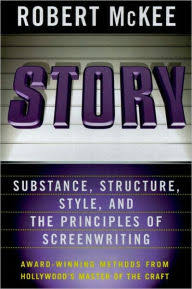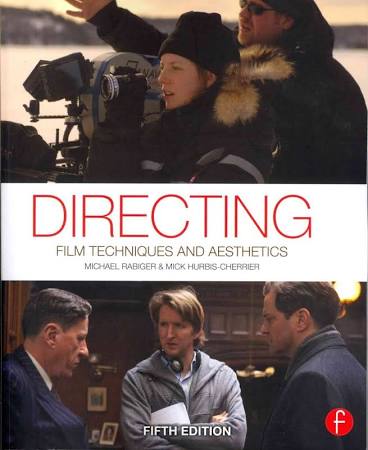30 Classic Archetypes to Help Your Story Pop
There is nothing new under the sun. And these character archetypes are in everything you watch and read. If’ you’re stuck trying to make one of your characters more interesting, maybe changing who they are and what motivates them will take your story to a new level. These archetypes may be just what your story needs. Don’t forget to add flaws and secrets to each character, whether it’s in the story or simply something that motivates them, and pushes them forward – or slows them down.
- The Hero: A noble, brave, and self-sacrificing character who embodies strength, courage, and honor.
- The Villain: An evil, manipulative, and cunning character who opposes the hero and seeks to harm others.
- The Mentor: A wise, knowledgeable, and experienced character who guides and trains the hero.
- The Rebel: A non-conformist, free-spirited, and unconventional character who challenges authority and social norms.
- The Lover: A passionate, emotional, and sensual character who seeks romantic or sexual relationships.
- The Sage: A wise, introspective, and philosophical character who provides insight and perspective.
- The Jester: A witty, funny, and entertaining character who brings levity to serious situations.
- The Innocent: A pure, kind, and naive character who sees the good in everyone and everything.
- The Explorer: A curious, adventurous, and daring character who seeks new experiences and knowledge.
- The Creator: An imaginative, artistic, and visionary character who creates and inspires.
- The Caregiver: A nurturing, compassionate, and selfless character who puts the needs of others before their own.
- The Outlaw: A rebellious, daring, and independent character who lives outside the law.
- The Magician: A mysterious, powerful, and mystical character who wields supernatural abilities.
- The Ruler: A authoritative, commanding, and dominant character who leads and governs others.
- The Everyman/Woman: An average, relatable, and ordinary character who experiences the ups and downs of everyday life.
- The Artist: A creative, expressive, and unconventional character who values self-expression and individuality.
- The Teacher: A knowledgeable, patient, and inspiring character who shares their expertise with others.
- The Trickster: A mischievous, playful, and unpredictable character who enjoys causing chaos and confusion.
- The Warrior: A fierce, strong, and courageous character who engages in physical combat and protects others.
- The Explorer: A curious, adventurous, and daring character who seeks new experiences and knowledge.
- The Advocate: A passionate, determined, and justice-oriented character who fights for a cause or group.
- The Scientist: A logical, analytical, and research-oriented character who seeks to understand and explain the world.
- The Rebel: A non-conformist, free-spirited, and unconventional character who challenges authority and social norms.
- The Detective: A analytical, perceptive, and deductive character who solves mysteries and crimes.
- The Survivor: A resilient, resourceful, and adaptive character who overcomes adversity and obstacles.
- The Martyr: A sacrificial, selfless, and honorable character who willingly suffers for a cause or belief.
- The Monster: A fearsome, monstrous, and dangerous character who represents chaos and destruction.
- The Leader: A charismatic, visionary, and persuasive character who inspires and motivates others.
- The Healer: A nurturing, compassionate, and empathetic character who provides physical or emotional healing.
- The Anti-Hero: A flawed, complex, and morally ambiguous character who may do the right thing for the wrong reasons or vice versa.
The Must-Read for Directors: “Directing Actors”by Judith Weston
If you can only pick one book from your director’s toolkit, “Directing Actors” by Judith Weston should be it. Weston’s wisdom is like a compass guiding directors through the delicate and intricate process of working with actors.
In this invaluable guide, she unveils the dos and don’ts of handling sensitive actors who lay bare their souls in front of an attentive crew. It’s a skill every director must master, and Weston’s insights are your key to success.
One of the gems in this book is Weston’s approach to script analysis. She unravels the subtext and undertones lurking within each line and every character’s action. It’s like peeling back the layers of a complex narrative, giving you a deeper understanding of your story.
Perhaps the most crucial lesson she imparts is the art of giving actable direction. She reminds us never to dictate how a performer should act but, instead, to provide business and actions that empower and motivate the actor to find the authentic moment they’re chasing. It’s a delicate balance, and Weston’s guidance is your North Star.
As a director, I’ve found myself returning to this book year after year. It serves as a poignant reminder of what truly matters in the craft of directing talent. I wholeheartedly recommend that you do the same. Let “Directing Actors” be your trusted companion on your journey to becoming a masterful director of performances. Your actors, and your audience, will thank you for it.
Dialogue by Robert McKee
After devouring Robert McKee’s “Story,” I couldn’t resist digging into “Dialogue.” It’s the next logical step, right? Well, here’s the twist… I actually read “Dialogue” first and then circled back to “Story.” I like to keep things interesting.I’m enigmatic.
Now, you might wonder which of these books to tackle first. The truth is, it’s entirely up to you. Whether you want to dive into the art of dialogue first or get the big picture of storytelling, the choice is yours. What matters most is that you read both.
“Dialogue” and “Story” are your trusty companions on the journey of storytelling. They’re not just books; they’re friendly guides, each offering valuable insights. So, take your pick, but don’t miss out on either. These books are here to help you become a storytelling pro. Happy reading!
Story by Robert McKee
Unlock the Secrets of Storytelling Mastery
Buy it. Read it. Read it again. Study it. Dog ear the pages. It’s a veritable treasure trove of story knowledge.
It’s a genuine treasure trove of storytelling wisdom. Robert McKee is undeniably a genius and a master when it comes to the art of storytelling.
Perhaps you’ve hesitated to read it because some have labeled it a challenging read. Disregard those naysayers, be they your inner doubts or the opinions of others. You’ll find yourself thanking me later. In truth, your gratitude belongs to Mr. McKee. He penned this masterpiece. He is, without a doubt, the true genius behind it all.
As you embark on this literary journey, don’t merely read—immerse yourself. Savor each word, absorb every concept, and let the profound insights seep into your creative soul. Feel free to underline passages, scribble notes in the margins, and mark those “aha” moments. This book is your compass in the vast ocean of storytelling possibilities.
Robert McKee’s work is more than a book; it’s a mentor, guiding you through the labyrinth of narrative intricacies. It demystifies the art of storytelling, empowering you to craft narratives that resonate deeply with your audience.
So, purchase it, read it, and explore its depths. Dive into the world of storytelling with the confidence that you’re in the capable hands of a true maestro. Thank me later, but, most importantly, thank Mr. McKee for gifting us this invaluable resource.
Directing: Film Techniques and Aesthetics by Michael Rabiger
I’ll be upfront—I’m currently working my way through “Directing: Film Techniques and Aesthetics” by Michael Rabiger, and it’s proving to be a bit of a rollercoaster. On one hand, a significant portion of the content seems geared towards beginners, which can be frustrating for those of you with a solid foundation in filmmaking.
However, just when I start to feel like I’ve heard it all before, Rabiger surprises me with a nugget of wisdom that I hadn’t quite considered on my own. It’s those moments of revelation that compel me to recommend this book to new filmmakers.
While it may seem like a mixed bag, I’ve come to realize that “Directing” serves a vital purpose. It lays down the basics that newcomers to the world of filmmaking need to grasp, but it also occasionally challenges even experienced directors to revisit their understanding of the craft.
In fact, we’re considering making this book required reading for our film students. It’s an ideal starting point for those just setting foot in the world of film, and it’s equally valuable for those of us who need an occasional reminder to question our assumptions and broaden our perspectives.
So, while “Directing” may have its ups and downs, it ultimately offers a well-rounded view of the director’s role in filmmaking. Whether you’re a newcomer or a seasoned pro, it’s a book that will provoke thought and discussion, making it a worthwhile addition to your director’s toolkit.




